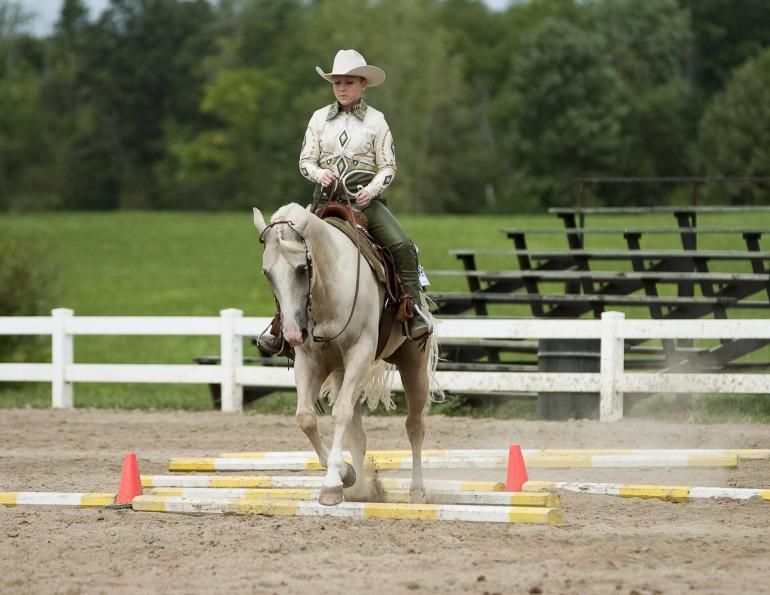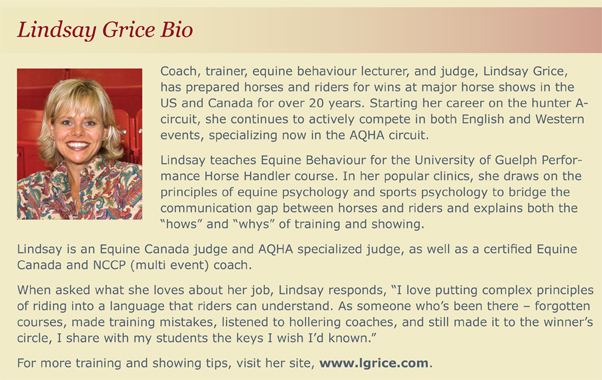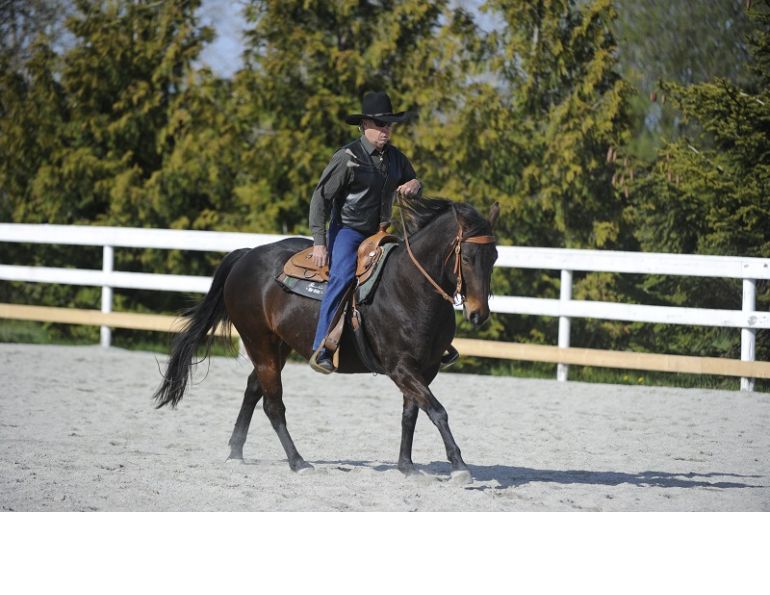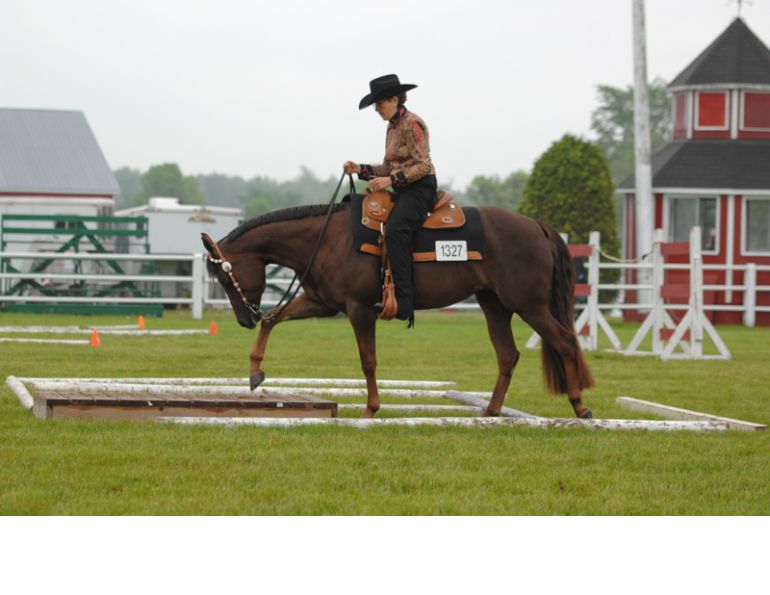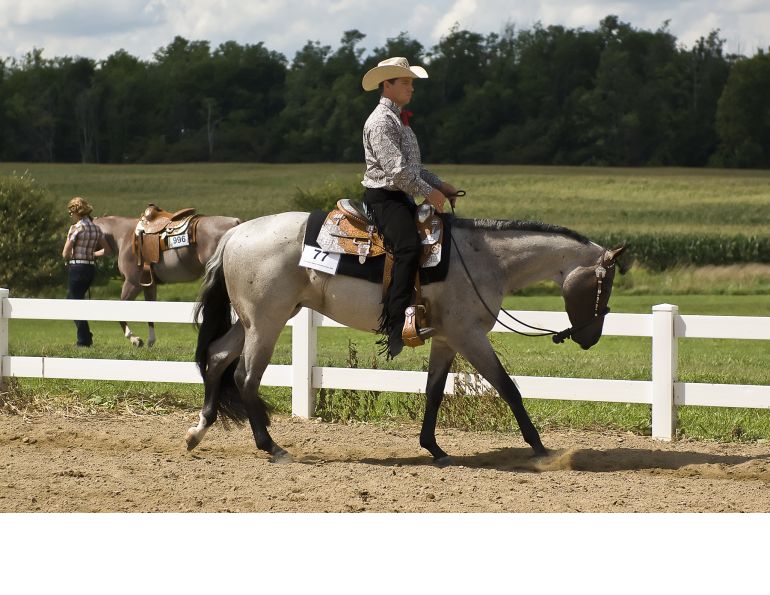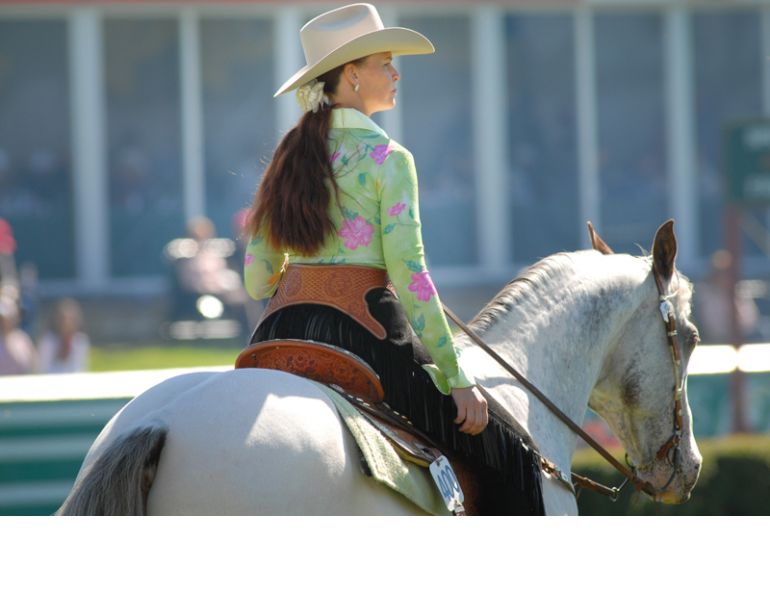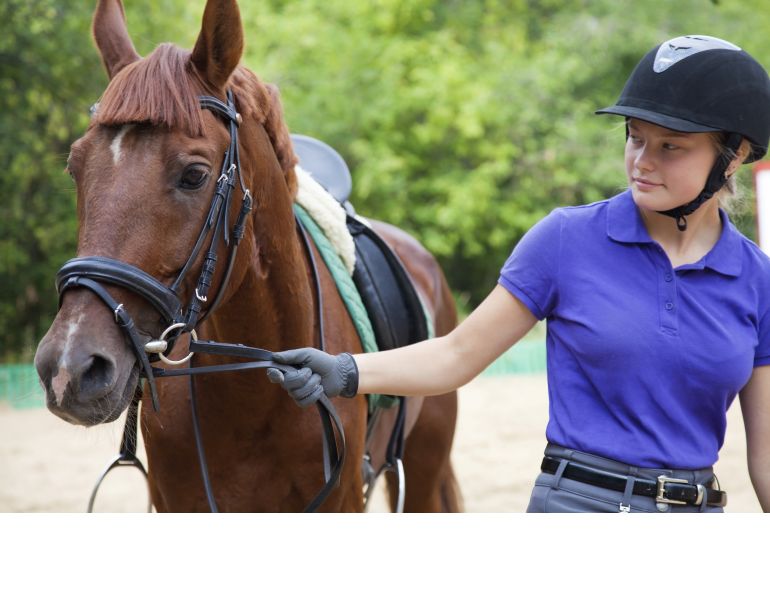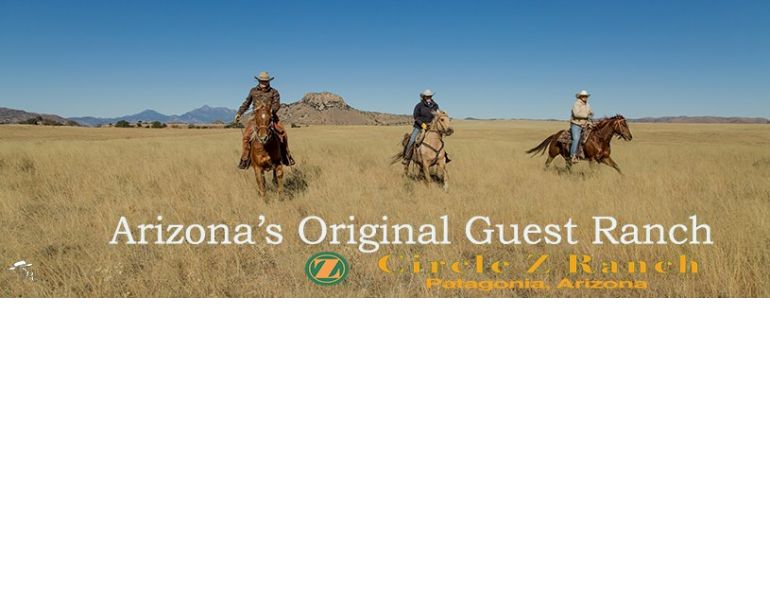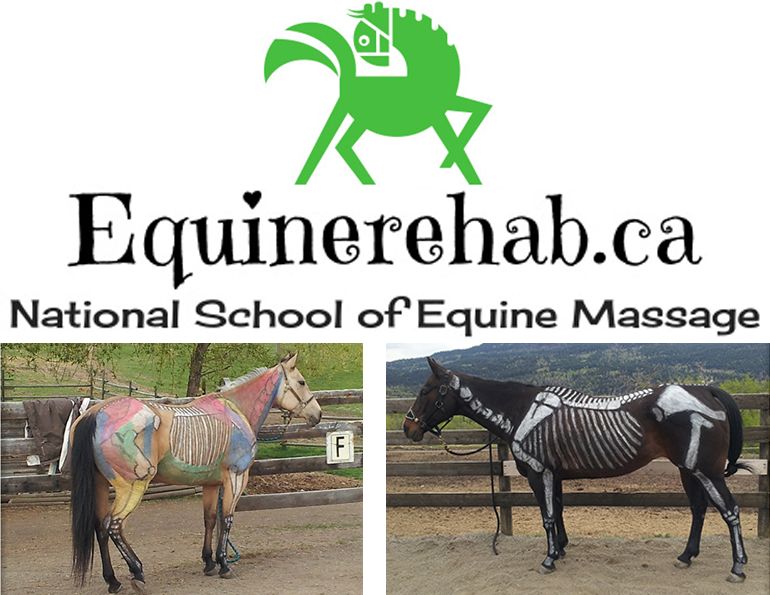By Lindsay Grice
Q My mare is progressing really well as I’m preparing her for trail competition. She jogs over poles, does gates and bridges, and sidepasses obstacles really well.
However, I’ve tried to lope her over poles in box and fan shapes as I’ve seen in trail courses and she ends up hitting them, breaking stride, or leaping over them — a real mess! Any tips?
A It sounds like you’ve done your homework, laying the groundwork of manoeuvring through obstacles and trotting through them first, before you began loping. Keep that slow progression, mastering one step at a time, as you start loping poles so that you won’t harm your horse’s confidence.
Rider error can cause horses to rush through the obstacles. Just like horses who rush over fences, those who don’t know how to adjust their own stride and don’t trust their riders’ judgement just want to get it over with. Some people confuse this with eagerness, but it’s actually adrenaline raised by fear. With every mistake, their confidence erodes and their flight instinct takes over. So slow and steady is the way to go. Even if it means sending your horse for a month or two to a professional for pole loping experience, build your mare’s foundation of confidence slowly.
In trail or when cantering over jumps, a rider’s “eye” has got to be developed. This means when a horse is loping in rhythm up to an obstacle, the rider will be able to sense whether he needs to shorten his stride or lengthen it a bit in order to meet the obstacle smoothly. Seeing this take off spot five or six strides away will enable the rider to make small adjustments on each of the strides preceding the pole and avoid the last minute, adrenaline raising “chip in” or “big lurch.”
Two skills need to be in order before you start loping poles. These will give you the tools you need to be able to get your horse to the pole straight and in the right length of stride — the rest is her responsibility.
Stride Adjustment — You should be able to shorten and lengthen your horse’s lope as evenly and smoothly as an elastic band, between six and ten feet. No stalling, head rising, or getting crooked!
Steering — Does your horse guide easily from your leg with minimal neck rein? Is she light and laterally responsive as you lope small circles and 90 degree turns? You must be able to control each of your mare’s body parts with your legs, moving the hips and shoulders independently.
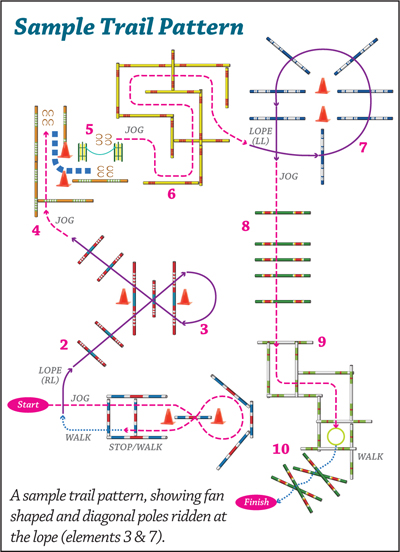 |
Once who have these two skills mastered, start by loping single poles scattered around your arena at a distance far enough away from each other that you have time to think in between (say, ten strides). Approach each pole at a six foot stride, on a perpendicular path, with your horse’s body straight. Try to count three strides before each pole and see if you’re right. If not, ask yourself if you should have lengthened or shortened the stride, and file that in your mental computer for the next pole. After loping hundreds of poles, your brain will start to make automatic decisions, just like it does when you’re driving your car (but not when you were learning!).
When you are placing your mare correctly to single poles, start loping multiple poles, boxes, ladder shapes, etc. Then start combining these so that one lope-over follows another, and gradually decrease the turning or recovery space between them. I like to set up a grid with a combination of boxes and poles that I can lope from any direction — lengthwise and crossways. Remember to proceed slowly so as not to overwhelm your horse. Build the grid larger one pole at a time.
I find it helpful to look at the crossing point of each pole well before I get there. I tell my riders to be decisive with their eyes, identifying the crossing points and points on the line of travel without wavering. Where you look, you will go! When I get “soft” with my eyes, I start to make mistakes.
Know what your mare’s six foot stride feels like and keep it the same, stride after stride. Keep your rhythm like a metronome — I always have a drum beat going in my head.
Many shows offer walk-trot and green divisions, which I recommend starting with when you’re ready to take the show on the road.
Main article photo: River Bend Designs - Loping poles successfully is all about stride adjustment and steering. Train your eye with single poles, then gradually build up your grids to increase difficulty.



